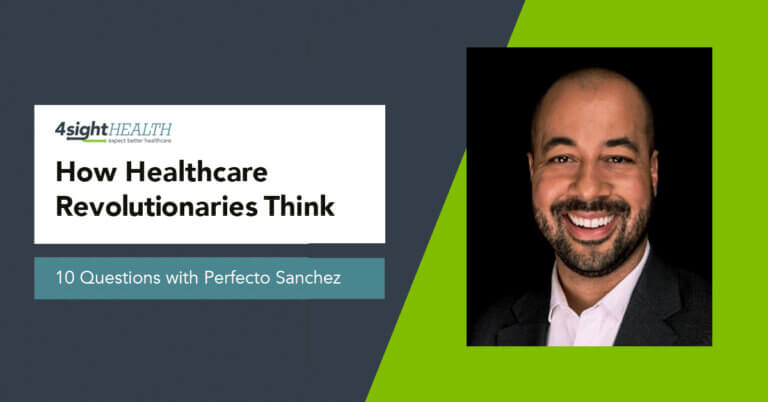August 26, 2020

High-Performing Professionals Run on Self-Awareness
Developing this self-awareness requires the courage to receive feedback from others.
Martina Navratilova is one of the greatest tennis players of all time. She won a remarkable 59 Grand Slam titles, including a record 9 Wimbledon singles championships. Her long career spanned four decades during which she was the WTA’s “Tour Player of the Year” seven times. Sports Illustrated recognized her to be one of the “Top Forty Athletes of All-Time.” I am such a huge fan that I own a pair of Martina’s autographed shoes. Martina Navratilova’s success, however, was not pre-ordained. She endured many struggles both personal and professional on her journey to tennis greatness.
When Martina Navratilova lost to Chris Evert in 1981, she told the New York Times that she “questioned her assumption that she could get by on talent and instinct alone.” After undertaking a focused self-inventory, she revamped her diet, adopted a rigorous cross-training exercise routine, and made changes to her mental and tactical game. As the Times so accurately concluded: she “transformed herself into the most successful women’s tennis player of her era.”
Like Martina, we often begin our “self-awareness” journeys after experiencing failure. Becoming more self-aware is more than a post-mortem exercise. It is an essential first step in leadership development for high-caliber professionals. Self-awareness is especially critical in career transitions. Tasha Eurich, PhD, an organizational psychologist, researcher and New York Times bestselling author stresses the importance of self-awareness:
Research suggests that when we see ourselves clearly, we are more confident and more creative. We make sounder decisions, build stronger relationships, and communicate more effectively.
Leadership research findings tell us self-aware people get more promotions and become more effective leaders. In a study undertaken by organizational consulting firm Green Peak Partners and Cornell University, researchers concluded that “a high self-awareness score was the strongest predictor of overall success.” A Korn Ferry study found that high-earning companies employ professionals with higher levels of self-awareness. Daniel Goleman, well-known psychologist and author, considers self-awareness to be the cornerstone of emotional intelligence.
The challenge is that while most people believe they are self-aware, self-awareness is actually a rare quality. A research study led by Tasha Eurich revealed that “although 95% of people think they’re self-aware, only 10 to 15% actually are.” If self-awareness is simply understanding who we are – clearly seeing our own values, thoughts, beliefs, and behaviors — why doesn’t it come easily? The reason is that we have to overcome our internal biases. As Adam Grant puts it, “when it comes to yourself, you’re the most biased judge of all.”
According to Grant, people are most self-aware of traits that are difficult to observe and easy to admit. But when our characteristics are easily observable and/or hard to acknowledge, we need others to help us see the truth about ourselves. Recently, I interviewed consultant and author Dorie Clark in a “Transitions” webinar for Harris alumni. She advises professionals considering career transitions to undertake a thorough self-assessment that combines both self-reflection and external feedback from friends and colleagues. Let’s examine each.
Internal Self-Reflection

Researchers advise looking forward rather than backward to increase productive insight and decrease unproductive rumination. Focus on asking forward-looking “what” questions, not backward-looking “why” questions. Tasha Eurich argues that the “what” questions help us stay objective, future-focused, and empowered to act on our insights. Asking “what steps do I need to take in the future to find a career that works for me” moves us to solutions, and away from spending too much time thinking about our previous bad patterns.
Mindfulness is a key strategy for building self-awareness. Drew Moss expressed it this way: “non-judgmental observation of the present increases behavioral flexibility and enhances self-awareness.” When I am coaching people, I often recommend “going up to the balcony” to observe the “dance floor.” Mindfulness gives us the ability to step back, observe ourselves dispassionately and learn. In particular, it helps us to notice and regulate our emotions.
External Self-Assessment
Understanding how other people view us is the second essential component of the self-awareness exercise. One strategy for building “external self-awareness” is to observe others’ reactions when we are speaking. A direct approach, more likely to show gaps between how we see ourselves and how others see us, is asking others for “trusted” feedback. In her book Reinventing You, Dorie Clark advocates conducting “360 interviews” with colleagues and friends.
Feedback helps us understand the impact of our actions on others. It can also build an empathy mindset. Self-aware leaders look for opportunities to invite feedback, listen to it, consider it, and potentially act on it.
Asking others for feedback requires humility and curiosity. Curiosity is an underappreciated leadership quality which enables us to ask and seek answers for hard questions. When we increase our curiosity and our self-awareness, we make more informed decisions, become better teammates, contribute more, and become more agile and adaptive leaders.
For high-performing athletes like Martina Navratilova, focused attention and awareness both internally and externally produces wins. The same is true for high-performing professionals who seek success in complex environments. For those individuals, leadership development begins with self-awareness.





